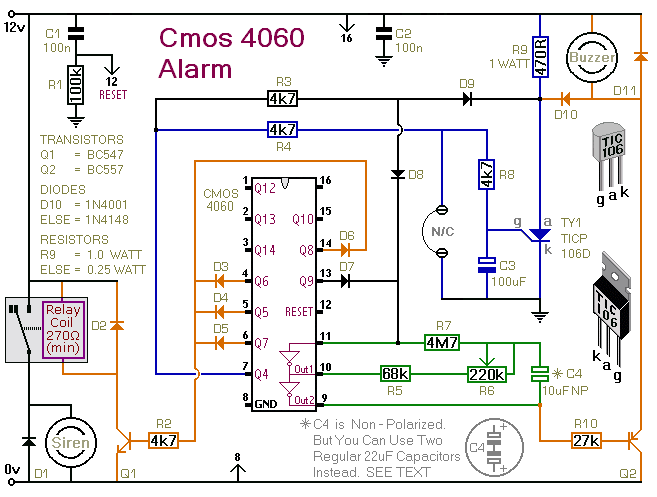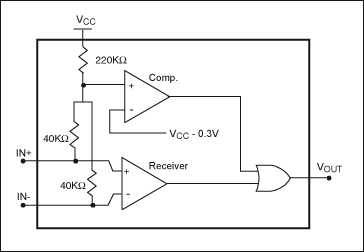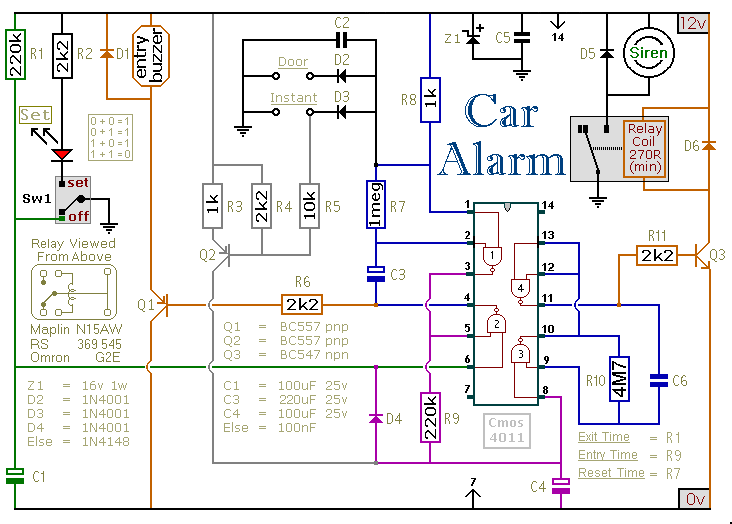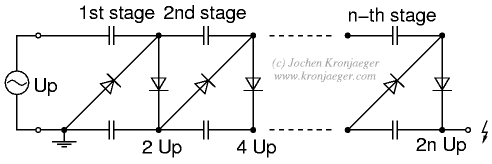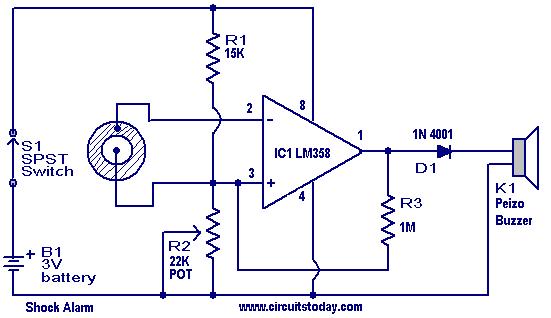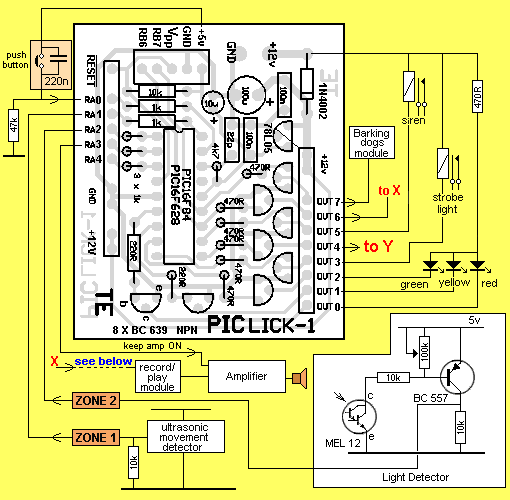
Alarm and Security Circuits
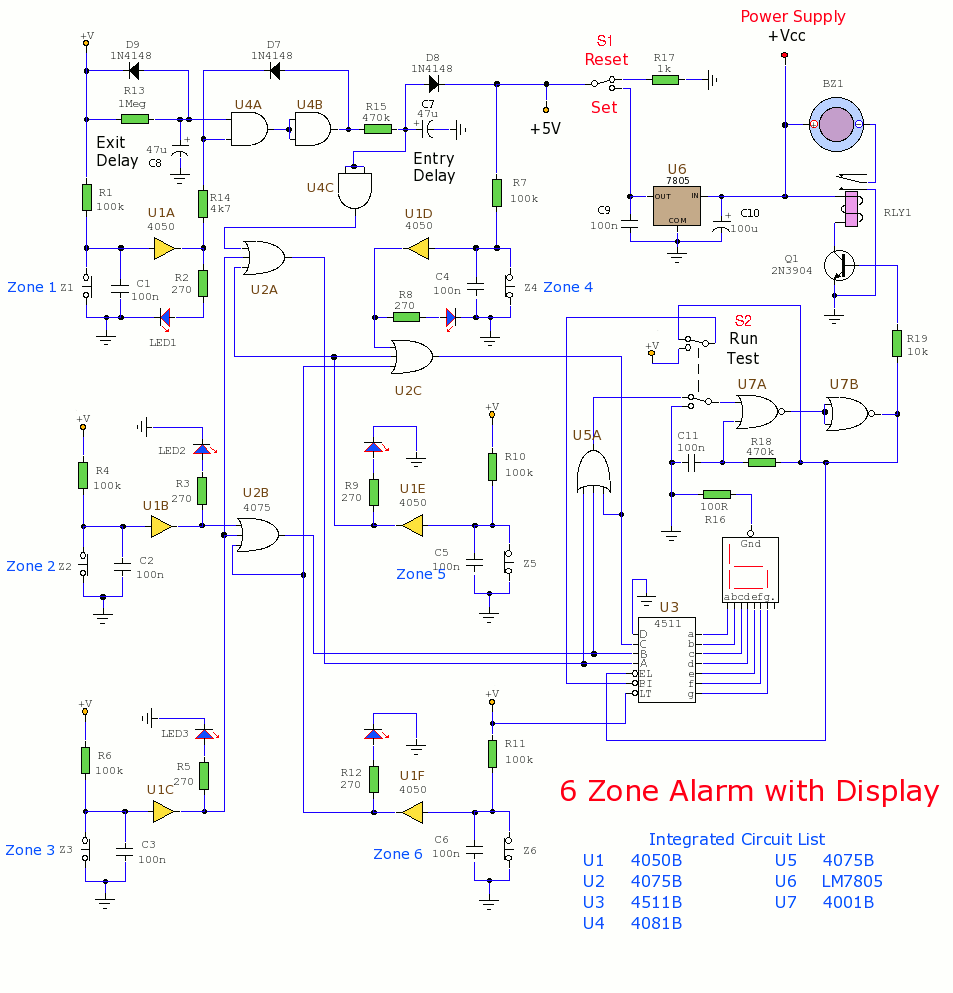
This section includes intruder alarms for homes, cars, and motorcycles, as well as power failure alarms, water level alarms, and a snore detector. All circuits are organized alphabetically on the Circuit Index page and chronologically on the update page. Contributors are acknowledged on the credits page. For assistance, it is recommended to consult the help page first. Most circuits on this site utilize SI notation. Due to a high volume of emails, responses are limited to inquiries about circuits featured on the site.
The described intruder alarm system encompasses multiple applications tailored for residential and vehicular security. The home intruder alarm is designed to detect unauthorized entry through various sensors, such as passive infrared (PIR) motion detectors or magnetic reed switches on doors and windows. These sensors trigger an alarm signal, which can be visual or audible, alerting the occupants or deterring intruders.
The automotive and motorcycle alarm systems are similarly constructed, integrating shock sensors and ignition cut-off mechanisms. These features prevent unauthorized vehicle access and can be configured to notify the owner via a mobile application or text message when tampering is detected.
Power failure alarms are crucial for monitoring critical systems that require uninterrupted power supply. These circuits utilize voltage monitoring to detect power outages and can activate backup systems or alert users through a notification mechanism.
Water level alarms are designed to monitor fluid levels in tanks or reservoirs. These circuits typically employ float switches or pressure sensors to detect high or low water levels, triggering an alarm or automated control system to prevent overflow or dry running of pumps.
The snore detector circuit is a unique application that utilizes sound sensors to monitor snoring patterns. When snoring is detected, the circuit can activate an alert mechanism, such as a gentle vibration or sound, to wake the individual without causing disturbance.
Each circuit is meticulously documented and organized for ease of access, with a focus on standard SI notation for measurements, ensuring clarity and consistency in understanding the specifications and functionalities. The inclusion of a help page provides users with troubleshooting guidance, enhancing the user experience and promoting effective implementation of the circuits.This section contains intruder alarms for your home, car and motorcycle, power failure and water level alarms and even a snore detector. All circuits are listed alphabetically on the Circuit Index page and in date order on the update page.
All contributors are listed on the credits page. If you have problems try my help page first. Most circuits on this site use SI Notation. Due to large volumes of email, I regret that I can only answer questions about circuits on my site. 🔗 External reference
The described intruder alarm system encompasses multiple applications tailored for residential and vehicular security. The home intruder alarm is designed to detect unauthorized entry through various sensors, such as passive infrared (PIR) motion detectors or magnetic reed switches on doors and windows. These sensors trigger an alarm signal, which can be visual or audible, alerting the occupants or deterring intruders.
The automotive and motorcycle alarm systems are similarly constructed, integrating shock sensors and ignition cut-off mechanisms. These features prevent unauthorized vehicle access and can be configured to notify the owner via a mobile application or text message when tampering is detected.
Power failure alarms are crucial for monitoring critical systems that require uninterrupted power supply. These circuits utilize voltage monitoring to detect power outages and can activate backup systems or alert users through a notification mechanism.
Water level alarms are designed to monitor fluid levels in tanks or reservoirs. These circuits typically employ float switches or pressure sensors to detect high or low water levels, triggering an alarm or automated control system to prevent overflow or dry running of pumps.
The snore detector circuit is a unique application that utilizes sound sensors to monitor snoring patterns. When snoring is detected, the circuit can activate an alert mechanism, such as a gentle vibration or sound, to wake the individual without causing disturbance.
Each circuit is meticulously documented and organized for ease of access, with a focus on standard SI notation for measurements, ensuring clarity and consistency in understanding the specifications and functionalities. The inclusion of a help page provides users with troubleshooting guidance, enhancing the user experience and promoting effective implementation of the circuits.This section contains intruder alarms for your home, car and motorcycle, power failure and water level alarms and even a snore detector. All circuits are listed alphabetically on the Circuit Index page and in date order on the update page.
All contributors are listed on the credits page. If you have problems try my help page first. Most circuits on this site use SI Notation. Due to large volumes of email, I regret that I can only answer questions about circuits on my site. 🔗 External reference
Warning: include(partials/cookie-banner.php): Failed to open stream: Permission denied in /var/www/html/nextgr/view-circuit.php on line 713
Warning: include(): Failed opening 'partials/cookie-banner.php' for inclusion (include_path='.:/usr/share/php') in /var/www/html/nextgr/view-circuit.php on line 713
